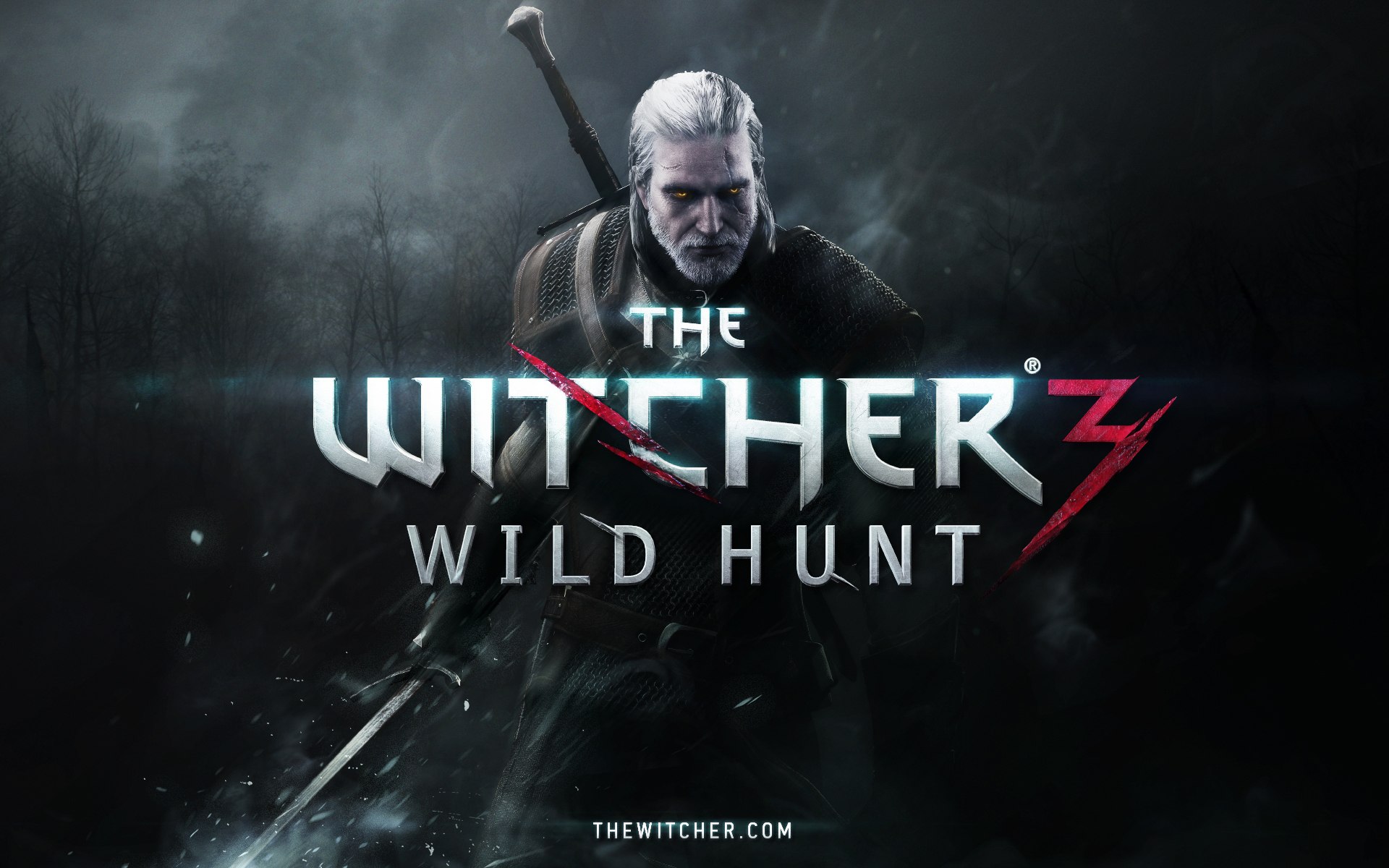Last week, we here at Press Start were invited to preview the latest build of CD Projekt RED’s The Witcher 3: Wild Hunt at the Bandai Namco office in Sydney. I had some apprehension at first, as this event would serve as my very first experience with the franchise. In spite of that, I was reassured that it would be a good entry point for newcomers with the game’s fresh storyline. Speaking in retrospect, I can say that is certainly the case, as I was able to get into the story without too much difficulty.
Geralt of Rivia makes his return as the central character, a great Witcher whose skill and prowess has earned him much respect and fear. Wild Hunt begins with our hero tracking the movements of his lover, Yennefer, whom I can only surmise is in some form of danger. Along the way, players will travel through small villages right in the path of invading armies and across the sea to fortresses where Scandinavian-like clans fight for supreme power, even as a new and mysterious force threatens the world.
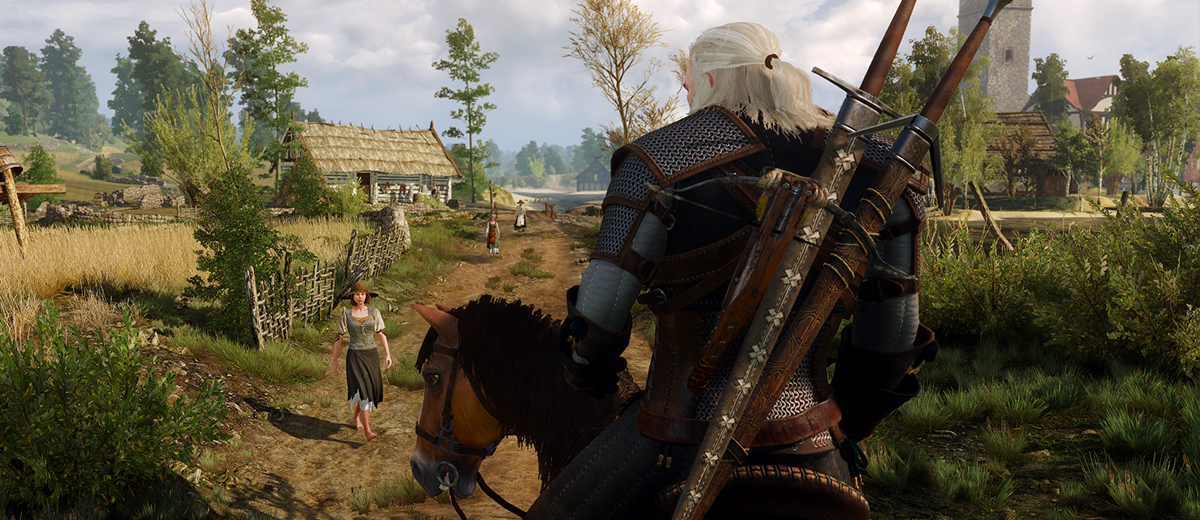
Getting into the demo, we were jokingly told that if we so desired, we could even spend the next couple of hours wandering the open world on horseback. I instead opted to go ahead with progressing through the game’s quests as normal, and nonetheless still had ample opportunity to marvel at the massive and beautiful setting.
One of the game’s core features is the nonlinear narrative, played out through the dialogue trees that pop up in conversation. For the most part, I was presented with several lines of questioning I could pursue before ending the conversation. However, opportunities did arise where the option could be taken to use Geralt’s powers to push an NPC into divulging information. There was a warning to use this sparingly, and I soon found out why, for I was mildly surprised by another NPC suddenly accusing Geralt of using trickery.
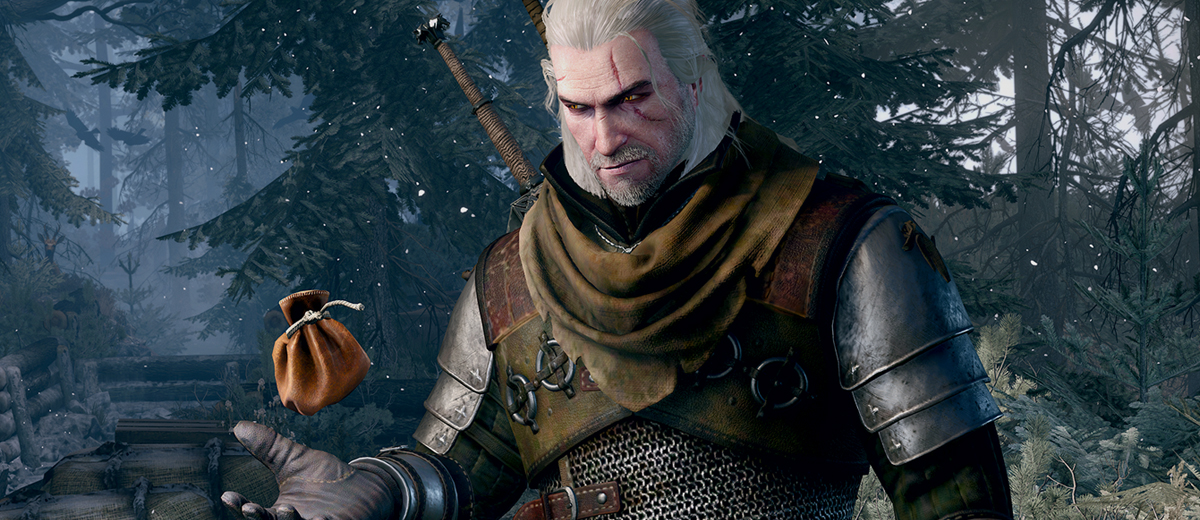
In other cases, the options undertaken can have great ramifications on the course of the game. I would say that when the time comes, players should consider each option quite carefully before proceeding. To my dismay, the only significant time I got to make a monumental decision was in a much later stage of the game, which we only jumped to from the beginning of the game. Regardless, I am still very much interested in seeing just how well CD Projekt RED have crafted the overall narrative, and in observing the propensity for major decisions in shifting the course of events.
For me personally, combat was somewhat refreshing. Geralt could parry or block attacks, or dodge them completely, as is the standard fare. Players also have access to Witcher Signs, which can be used in ways such as trapping a foe. I found that I had some slight issues with this at first, as skirmishes would normally be in the heat of the moment and I would just end up button mashing.
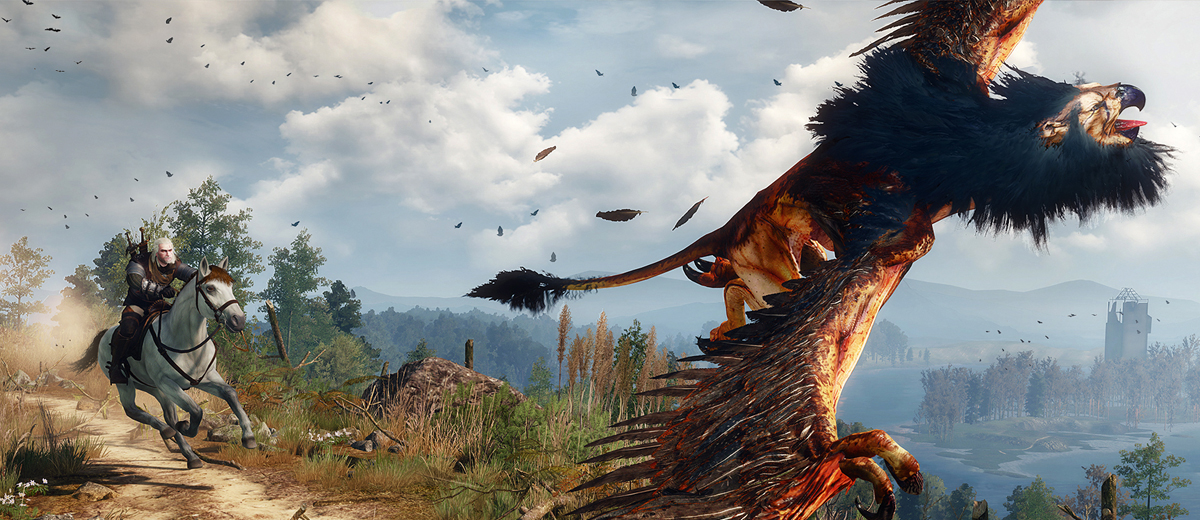
Beyond the usual features of a combat system, however, there was also another aspect to it within the game. Players are able to access the bestiary, which is a detailed resource on creatures and how to deal with them. I quite like the implementation of this feature, as it allows players to prepare themselves for combat ahead of time, and even work out tactically how best to tackle creatures.
As someone imbued with superhuman powers, Geralt also has the ability to use an ability known as Witcher sense. I liken it to eagle vision from the Assassin’s Creed series, though it is used for much more here. For example, some instances would have players following someone’s movements, even if they were long gone. Activating Witcher sense offers the ability to track their footprints or blood trail. In other cases, it is useful for identifying objects of interest. I did encounter some trouble with this, as visibility can be reduced and players risk missing a highlighted object that they can’t see while using the sense.
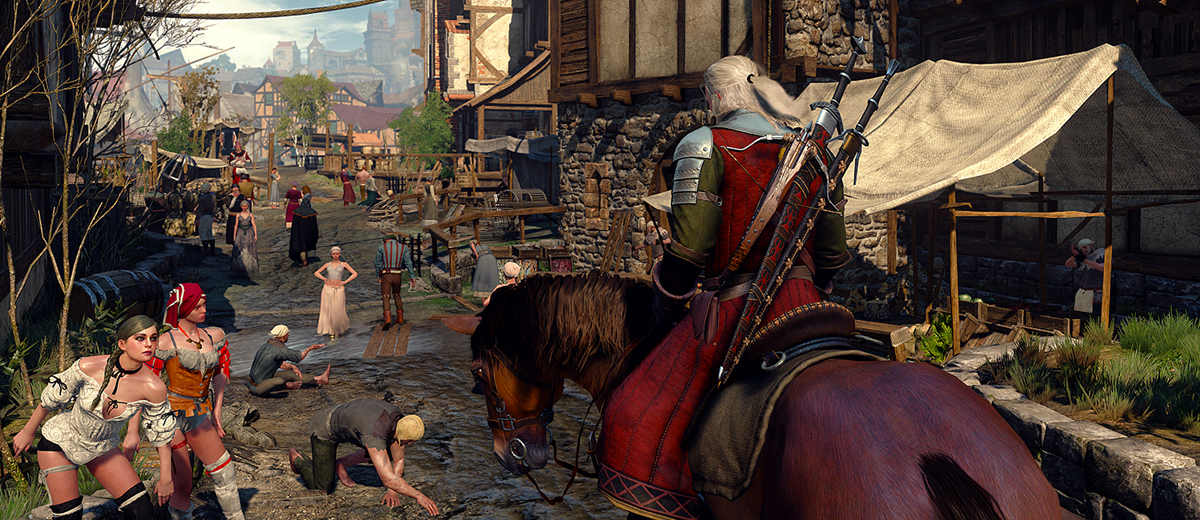
Now, the amount of detail put into every facet of this game cannot be understated, a notion that comes across perhaps most evidently within the environment. Games like those of the Assassin’s Creed franchise do feature open world maps, but comparatively, I have to admit that their scale feels quite unrealistically small when you look at the world of Wild Hunt. It is truly vast, often necessitating the need for a horse to traverse the landscape.
For lack of a better word, the game environment is just beautiful. Fields of crops give way to villages and towns, each unique in their own way. Elsewhere, Scandinavian fortresses that overlook stunning scenery such as those you would find in far off lands like Norway. Considered separately, there was some point to each little location, well worth a few moments to explore. Brought together, they make up for quite something to behold.
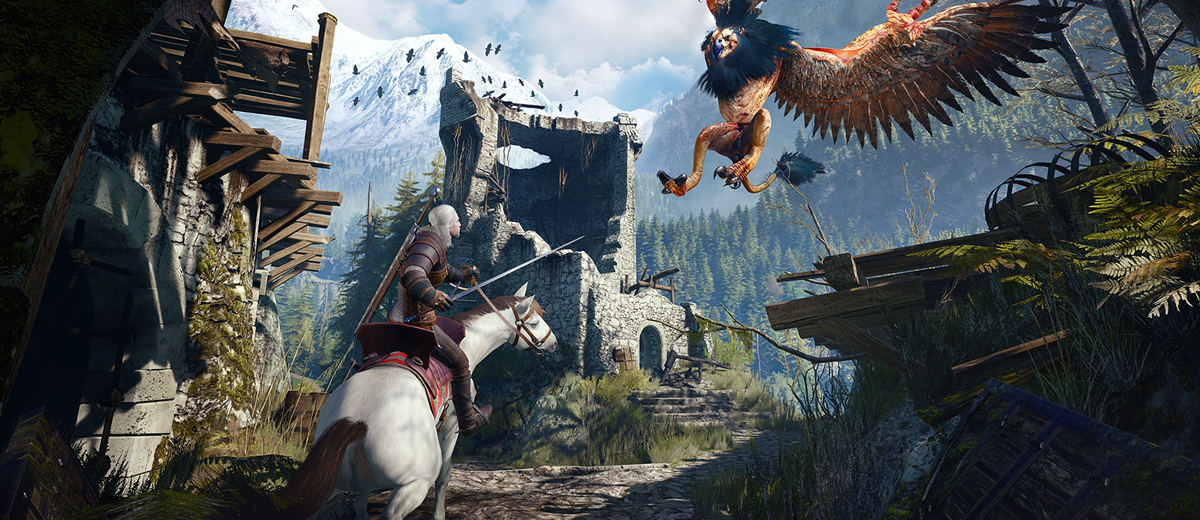
In the course of my exploration, I also stumbled upon a battlefield, littered with what felt like the bodies of at least a hundred fallen soldiers. Such was the attention given to this one small location that you could not help but stop and look at them all. Some men had died by their enemy’s sword, with others cut down by a hail of arrows, and others still just simply burnt alive. On more than one occasion, I caught myself picking my way through the carnage and trying to imagine all the unique circumstances that would’ve played out in the battle, culminating in the grisly scene before me. Given that this was relatively just one small location in the world, it is evident that CD Projekt RED has put great care into even the most insignificant of elements to enhance the gaming experience.
While I earlier pointed to Geralt’s horse Roach as likely every player’s preferred form of travel, there are of course times when you’ll have to rely simply on the Witcher’s own athleticism. Likely due to some issue in the build, Roach did not appear when summoned. Content to just walk about for a while, I soon came across a broken bridge. My run up subsequently failed, and in trying to free myself from the ditch below, I could not quite get out without having to go the long way around to find something I could climb. This seemed rather inconvenient, given that the edge of the broken bridge was within reaching distance. In saying that, the movement system did fail me on more than one occasion, so it does have some room for improvement.
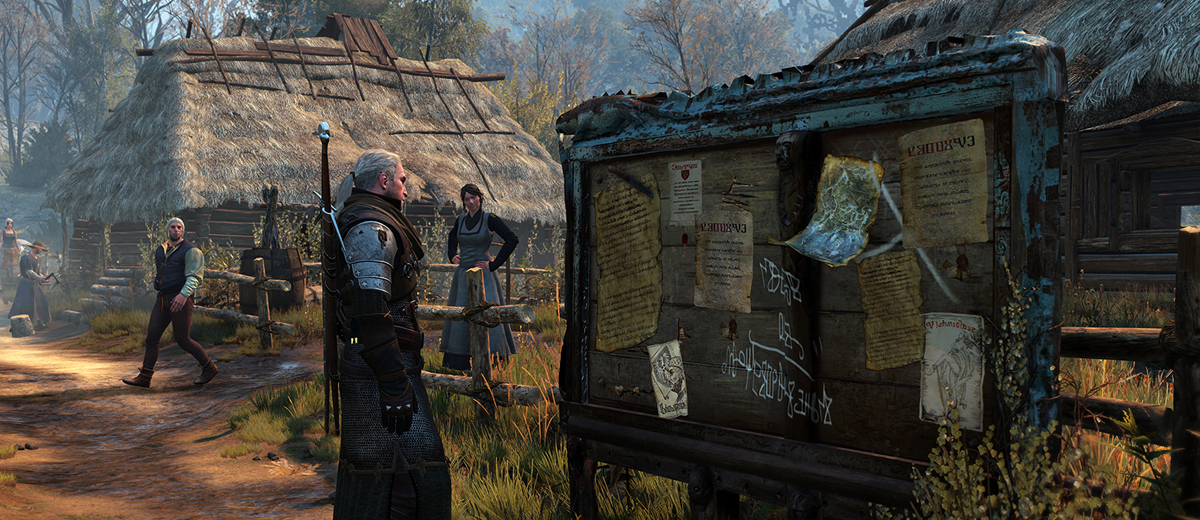
Unlike many other games, Wild Hunt has a shifting day and night cycle. While the same feature is certainly present in games like Grand Theft Auto V, the cycle here has a greater purpose. For example, during one of the side quests, I crossed paths with a wraith. Prompted to consult the bestiary, I found that among a wraith’s weaknesses was combat at night. Considering the in-depth nature of other aspects within Wild Hunt, I look forward to seeing what other possible uses the cycle can have across the rest of the game.
As I’ve stressed throughout this article, there are so many aspects just there to see and do throughout the game. I cannot speak for the entirety of the game, but it would seem that CD Projekt RED has drawn a fine balance between gameplay and the sideshow. By this, I mean the opportunity to take in everything while still progressing through the game.
The Witcher 3: Wild Hunt is scheduled to be released on May 19 for the PlayStation 4, Xbox One and PC.


